
Roots
A quiet inquiry often stirs within us when we consider the subtle shifts in our hair’s disposition. One day, curls coil with springy delight; another, they appear parched, resisting every effort to hydrate. This variance, so often attributed to our chosen products or internal states, holds a less visible accomplice ❉ the very air we breathe.
Our hair, a sentinel exposed to the elements, silently registers the atmospheric changes around us. To truly grasp why our strands may thirst or flourish, we must look beyond the mirror and into the unseen atmospheric currents that sculpt our hair’s delicate moisture balance.

Hair Anatomy and Its Atmospheric Connections
At its most basic, a single hair strand is a marvel of biological design. Each strand consists of three main parts ❉ the medulla, the cortex, and the cuticle. The outermost layer, the Cuticle, resembles tiny overlapping scales, much like shingles on a roof.
When these scales lie flat and smooth, they create a protective shield, sealing in moisture and granting hair its natural sheen. This barrier safeguards the inner structures from external aggression.
Beneath the cuticle lies the Cortex, which comprises the bulk of the hair fiber. This region holds the keratin proteins that provide hair with its strength and elasticity, alongside melanin, the pigment that determines our hair color. The innermost core, the medulla, is present in some hair types, often those with greater thickness. The integrity of these layers, particularly the cuticle and the cortex, directly dictates how well hair retains its moisture.
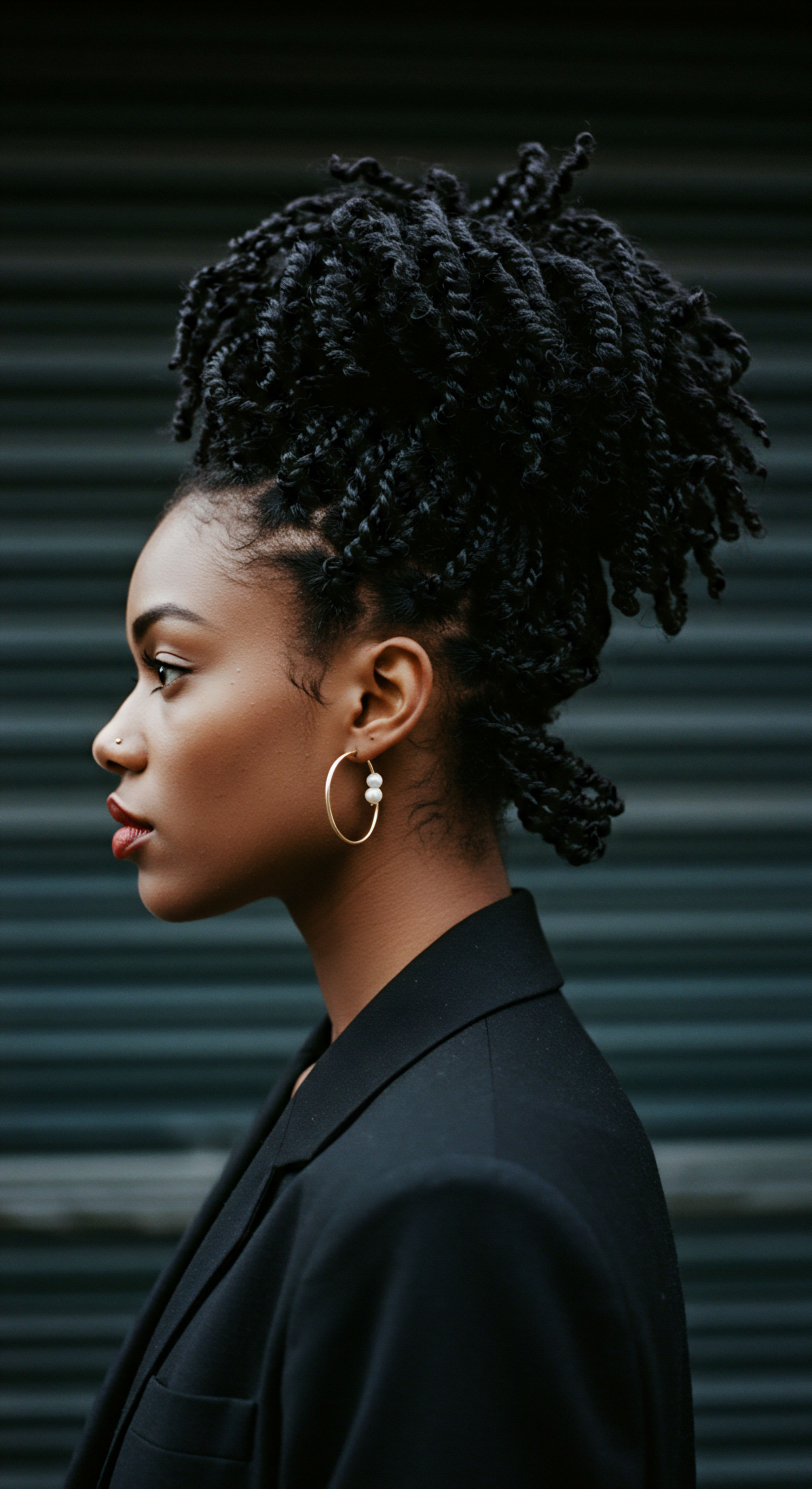
What Does Hair Need to Stay Moisturized?
Hair moisture depends on a delicate equilibrium of water and lipids. The hair’s natural lipid layer, composed of fatty acids, ceramides, and cholesterol, acts as a crucial barrier, preventing water loss from the cuticle. These lipids, released by the scalp’s sebaceous glands, also contribute to hair’s softness and shine.
When this lipid layer is intact, hair repels excessive water, preventing frizz, while holding onto the hydration it needs. Conversely, damage to this layer leads to dryness and dullness.
Hair, an exposed sentinel, silently registers atmospheric shifts that influence its moisture balance.
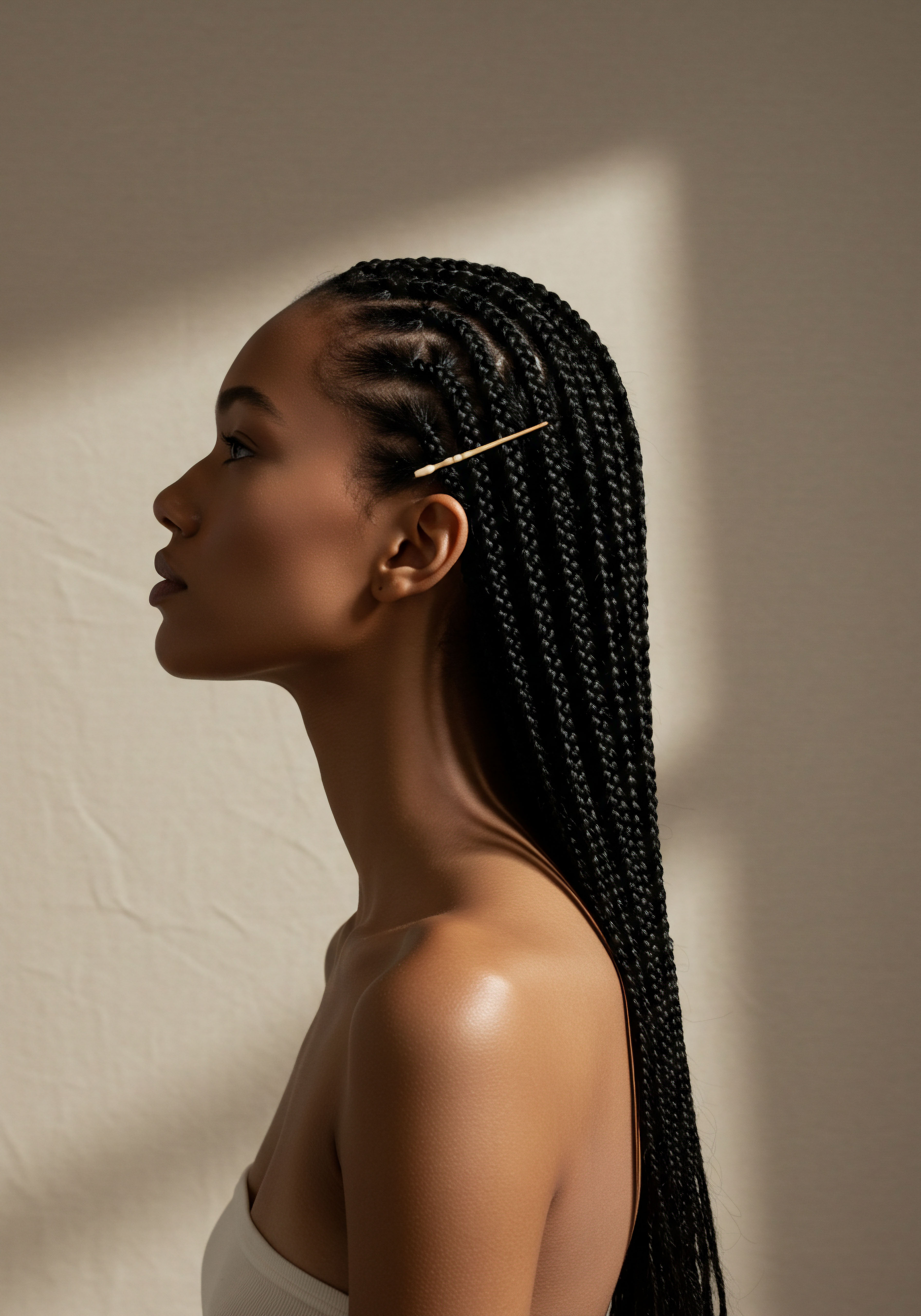
The Invisible Guests of the Air
The air around us, particularly in urban settings, carries a complex blend of microscopic elements. These atmospheric guests, often too small to see, include particulate matter (PM), volatile organic compounds (VOCs), and heavy metals.
- Particulate Matter ❉ These are tiny solid particles and liquid droplets suspended in the air, ranging from dust and soot to smoke. They are categorized by size, with PM2.5 (particles smaller than 2.5 micrometers) being particularly concerning due to their ability to penetrate deep into hair follicles and skin. To offer a perspective, PM2.5 particles are approximately 1/30th the diameter of a human hair.
- Volatile Organic Compounds ❉ These are chemicals that evaporate readily into the air, originating from vehicle exhaust, industrial operations, and even household products. Benzene, formaldehyde, and toluene count among these airborne chemicals.
- Heavy Metals ❉ Toxic metals such as lead, mercury, and cadmium can exist in polluted air and accumulate on the scalp and hair.
These atmospheric components, alongside gases like sulfur dioxide and nitrogen dioxide, contribute to oxidative stress and inflammation, directly compromising hair health and moisture.
| Pollutant Type Particulate Matter (PM2.5, PM10) |
| Sources Vehicle exhaust, industrial emissions, dust |
| Direct Hair Effect Physical adhesion, cuticle damage, oxidative stress, reduced shine, moisture loss |
| Pollutant Type Volatile Organic Compounds (VOCs) |
| Sources Vehicle exhaust, industrial processes, household products |
| Direct Hair Effect Oxidative stress, scalp irritation, inflammation |
| Pollutant Type Heavy Metals (Lead, Mercury, Cadmium) |
| Sources Industrial activity, vehicle emissions |
| Direct Hair Effect Accumulation on hair, protein damage, hair loss, graying |
| Pollutant Type Ozone |
| Sources Vehicle exhaust, industrial processes |
| Direct Hair Effect Oxidative damage to lipids and proteins |
| Pollutant Type These airborne elements compromise hair's structural integrity and moisture retention. |
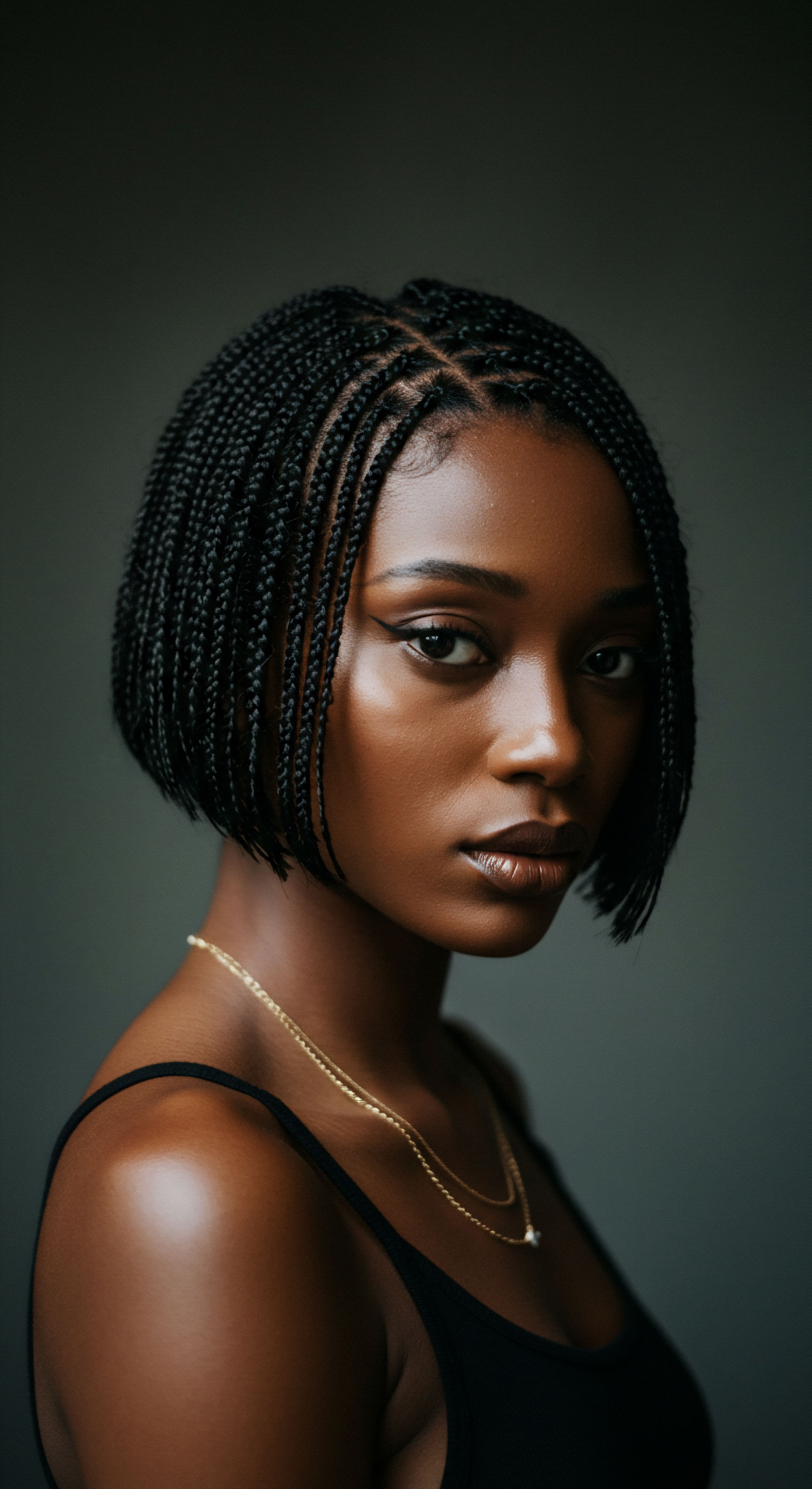
Ritual
With the fundamental knowledge of hair’s structure and its atmospheric challengers, our thoughts naturally turn to the daily rhythms of care. How do we move from awareness to action, gently guiding our strands through the unseen gauntlet of environmental exposure? This section considers the practical steps, the intentional rituals, that can safeguard hair’s moisture, offering a sense of calm wisdom in the face of external stressors. Our routines become a protective balm, a deliberate shield against the very air we breathe.

Cleansing with Purpose
The initial step in mitigating air pollution’s impact on hair moisture begins with mindful cleansing. Pollutants, particularly particulate matter, can adhere to the hair surface and scalp, forming a dulling film that obstructs the absorption of beneficial products and contributes to dryness. Regular washing with appropriate cleansers becomes a cleansing ceremony, lifting away these environmental residues.
Consider cleansers that do not strip hair of its natural oils, as a compromised lipid barrier makes hair more susceptible to pollution’s drying effects. Look for formulations designed to gently remove impurities without harsh sulfates, which can exacerbate moisture loss.

What Cleansing Approaches Help Hair?
- Gentle Shampoos ❉ Select shampoos that are pH-balanced and formulated for textured hair, as these are less likely to disrupt the cuticle and lipid layer. They cleanse effectively without stripping vital moisture.
- Clarifying Treatments ❉ Periodically, a clarifying wash can remove stubborn pollutant buildup and product residue that might be weighing hair down and hindering moisture absorption. This should be done judiciously to avoid excessive drying.
- Scalp Care Focus ❉ Since pollutants can irritate the scalp, leading to dryness, itchiness, and even inflammation, incorporating scalp-focused cleansing can improve the environment for healthy hair growth and moisture regulation. A healthy scalp lays the foundation for moisturized strands.
Our hair routines serve as a protective balm, shielding against environmental stressors.

Conditioning and Protection Strategies
Beyond cleansing, the intentional application of conditioners and protective styling offers a vital layer of defense. Conditioners replenish moisture, smooth the cuticle, and create a temporary barrier against external aggressors.

How Do Conditioners Aid Hair Moisture?
Conditioners work by sealing the cuticle, thereby minimizing moisture loss and helping hair maintain its natural balance. For textured hair, which often has a more open cuticle structure, this sealing action is particularly beneficial in preventing rapid moisture evaporation.
Applying conditioner primarily to the lengths and ends of hair, avoiding the scalp to prevent greasiness, helps target the areas most vulnerable to environmental exposure.
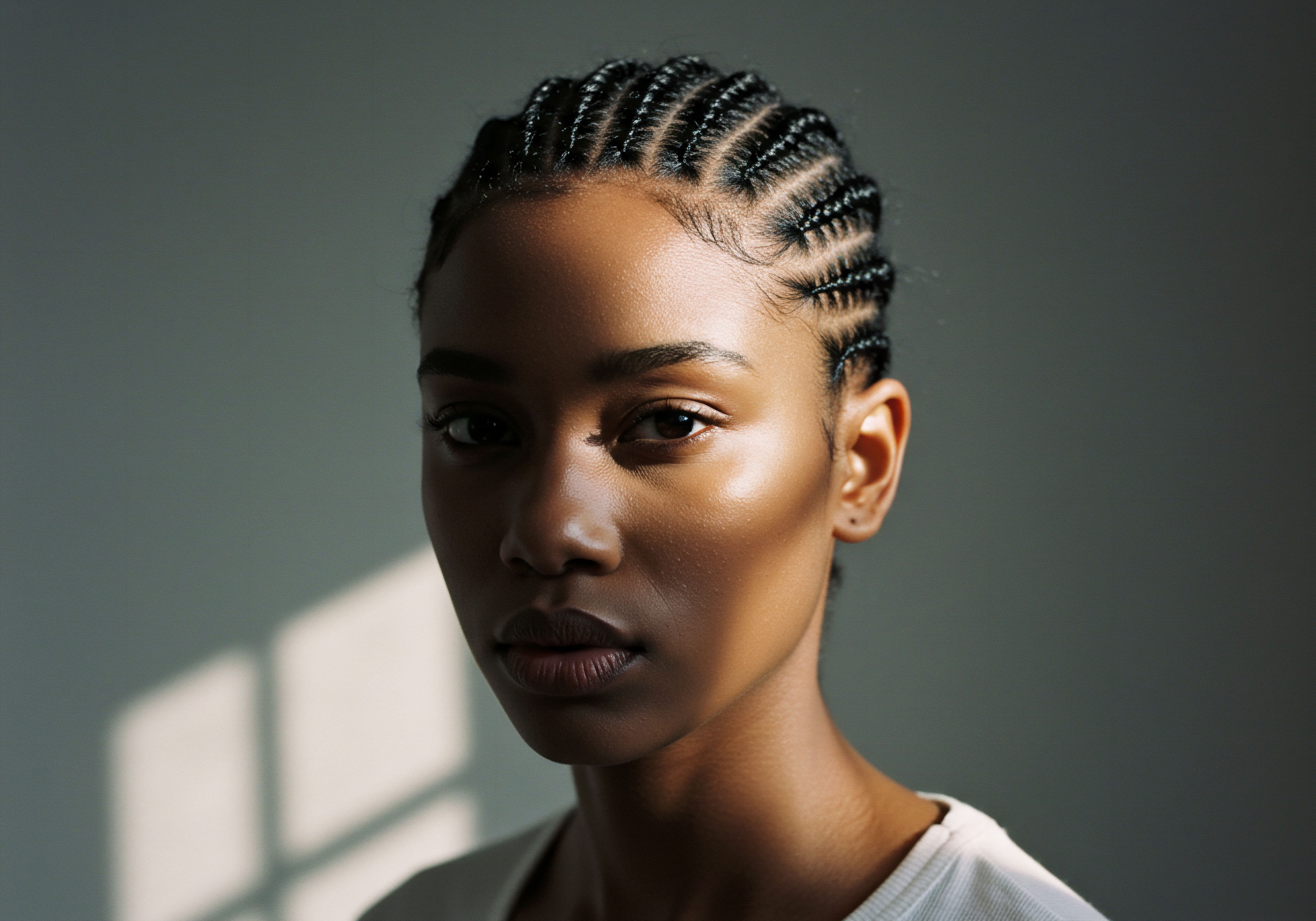
Protective Styling and Accessories
Certain styling choices can physically shield hair from direct exposure to airborne pollutants. This physical barrier can reduce the amount of particulate matter settling on the hair shaft and scalp.
For instance, wearing scarves, hats, or using umbrellas when outdoors provides a tangible defense against pollution and UV radiation, both of which degrade hair proteins and lipids. Similarly, styles that keep hair gathered and tucked away, such as braids, buns, or twists, can limit the surface area exposed to the air.
The strategic use of hair oils can also supplement hair’s natural defenses. Oils like coconut, argan, or jojoba can help form a physical barrier against pollutants while simultaneously locking in moisture. This dual action supports hair’s hydration and structural integrity against environmental assault.

Relay
Having considered the foundational science and the daily rituals that shape our hair’s interaction with its surroundings, we now step into a deeper consideration ❉ the profound interplay of environmental factors, human biology, and cultural responses. This section seeks to connect the seemingly disparate dots, illustrating how the invisible components of our air can orchestrate a cascade of effects on hair moisture, drawing upon precise scientific observation and real-world scenarios that prompt a more expansive contemplation of hair health.

The Unseen Assault on Hair’s Structure
Air pollution’s influence on hair moisture extends beyond simple dryness; it provokes structural degradation at a microscopic level. Pollutants, particularly fine particulate matter and polycyclic aromatic hydrocarbons (PAHs), generate reactive oxygen species (ROS) when they interact with hair and scalp cells. This process, known as oxidative stress, acts like a slow, corrosive force on the hair’s fundamental components.
Oxidative stress degrades Keratin, the protein that provides hair with its strength and resilience. This degradation weakens the hair, making it more prone to breakage, frizz, and split ends. Moreover, pollutants can damage the outermost lipid layer of the hair cuticle, specifically the 18-methyl eicosanoic acid (18-MEA) lipid.
This hydrophobic layer is critical for repelling water and sealing in moisture. Damage to 18-MEA, often caused by alkaline compounds in air pollution, leaves the hair more hydrophilic, making it more susceptible to water loss and further damage.
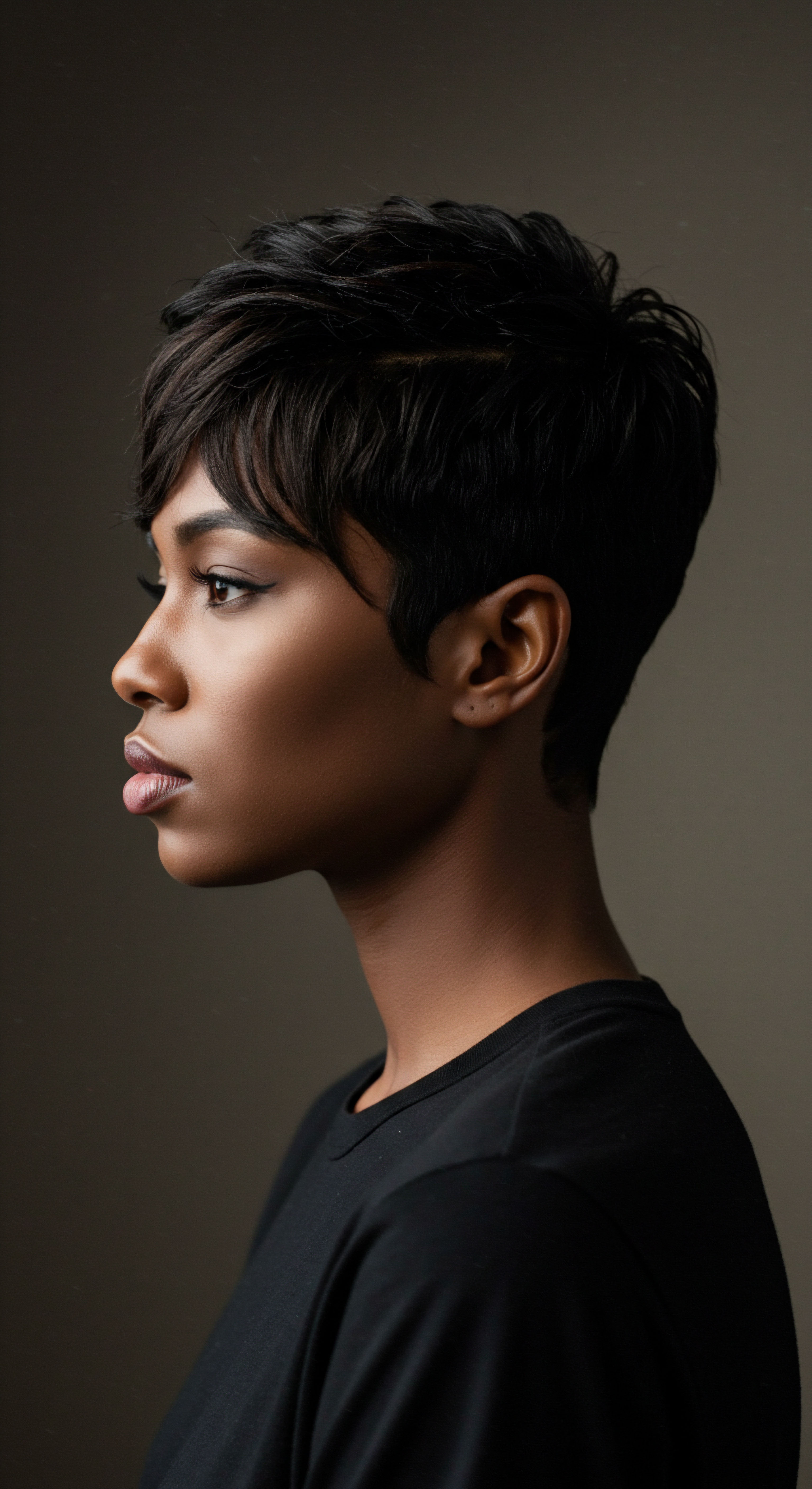
How Does Air Pollution Impact Hair’s Internal Strength?
The effects of air pollution are not limited to the hair’s surface. Studies have shown that pollutants can penetrate the hair shaft, affecting the cortex. Research has documented a significant increase in the Hair Cortex Damage Ratio in hair samples exposed to increasing concentrations of pollutants, particularly when coupled with UV light exposure.
A study published in the Proceedings of the National Academy of Sciences (PNAS) found that hair samples with higher pollution profiles exhibited a significantly increased damage ratio in the hair cortex after as little as 1.5 years of hair growth, independent of the city of origin. This indicates a direct link between environmental exposure and internal structural weakening, which directly impacts hair’s ability to retain moisture and maintain its integrity.

Air Quality and Hair’s Life Cycle
Beyond structural damage, air pollution can interfere with the hair growth cycle itself, impacting the overall health and moisture regulation of new growth. Hair follicles, the tiny organs that produce hair, are particularly vulnerable due to their high levels of cell division and blood supply.
Pollutants can penetrate hair follicles, disrupting the natural hair growth cycle and leading to weakened follicles that struggle to produce healthy hair. This can result in hair thinning and loss. A compelling finding indicates that air pollution levels can increase oxidative stress in hair follicle cells, a mechanism similar to that observed in certain types of hair loss.
Air pollution prompts structural degradation and impacts hair’s ability to retain moisture.
For instance, studies have shown that exposure to diesel and dust can significantly decrease levels of key proteins responsible for hair growth, such as Beta-Catenin and Cyclin D1. These proteins are crucial for the formation of new hairs and the regeneration of follicular keratinocytes, the self-renewing cells involved in the hair growth cycle. A reduction in these proteins signals a compromised environment for hair renewal, leading to drier, weaker strands over time.

The Global Hair Environment
The widespread nature of air pollution means that its impact on hair moisture is a global concern, particularly for those living in highly urbanized or industrialized areas. Hair itself serves as a bioindicator, with its mineral content offering insights into long-term exposure to toxic substances.
Consider the situation in cities like Kathmandu, Nepal, which in 2017 ranked among the highest in the World Pollution Index. Residents often resort to wearing multiple layers of scarves and masks for protection against heavily concentrated particulate matter. In such environments, numerous hair problems, including dryness, frizz, and even hair loss, have become prevalent.
Pollutants draw moisture from the hair, affecting its keratin and leading to a rough, dull appearance. This real-world example underscores the tangible, daily challenges faced by individuals whose hair is constantly exposed to compromised air quality.
The interplay between environmental pollution and hair health also extends to the scalp’s microbiome and barrier function. Pollutants can disrupt the scalp’s delicate balance, causing irritation, excessive sebum secretion, and inflammation. An unhealthy scalp environment directly hinders hair’s ability to grow optimally and retain moisture, creating a cycle of dryness and vulnerability.
| Hair Component Cuticle Scales |
| Impact of Pollution Raised, shredded, uneven surface |
| Consequence for Moisture Increased porosity, rapid moisture loss |
| Hair Component 18-MEA Lipid Layer |
| Impact of Pollution Loss due to alkaline compounds |
| Consequence for Moisture Hair becomes more hydrophilic, reduced water repellency, direct exposure to damage |
| Hair Component Keratin Proteins |
| Impact of Pollution Degradation from oxidative stress |
| Consequence for Moisture Weakened hair, increased breakage, frizz |
| Hair Component Hair Follicle Cells |
| Impact of Pollution Oxidative stress, decreased growth proteins |
| Consequence for Moisture Impaired hair growth, thinner, drier new strands |
| Hair Component Pollutants compromise hair from its outermost layer to its growth mechanisms, directly affecting hydration. |

Reflection
Our exploration of air quality and hair moisture reveals a relationship far more profound than surface observation might suggest. Hair, in its quiet resilience, stands as a testament to our environment, reflecting the atmospheric conditions it encounters. Understanding this intricate dance between the air and our strands offers more than just knowledge; it presents an invitation to deeper care, a gentle reminder of our interconnectedness with the world around us. May this awareness inspire thoughtful choices, allowing our hair to not only survive but truly flourish amidst the currents of modern life.

References
- Son, E. & Kwon, K. H. (2025). The Invisible Threat to Hair and Scalp from Air Pollution. Polish Journal of Environmental Studies, 34(2), 1745-1753.
- Naudin, G. Bastien, P. et al. (2019). Human pollution exposure correlates with accelerated ultrastructural degradation of hair fibers. Proceedings of the National Academy of Sciences, 116(37), 18385-18390.
- Choi, S. H. & Shin, S. H. (2018). Pollution Damage and Protection of Asian Hair. Cosmetics, 5(1), 17.
- Lefebvre, M. A. Pham, D. M. et al. (2015). Evaluation of the impact of urban pollution on the quality of skin ❉ A multicentre study in Mexico. International Journal of Cosmetic Science, 37(4), 357-365.
- Abramovits, W. (2024). The Effects of Environmental Pollutants and Exposures on Hair Follicle Pathophysiology. Skin Appendage Disorders, 10(2), 107-118.
- Srogi, K. (2004). Heavy metals in hair as indicators of environmental pollution. Environment Protection Engineering, 30(3-4), 113-122.
- Kim, J. E. et al. (2019). Air Pollution and Hair Loss ❉ A Study of the Effect of Particulate Matter on Human Hair Follicle Dermal Papilla Cells. International Journal of Trichology, 11(3), 115-120.
- Bencko, V. (1995). Use of human hair as a biomarker in the assessment of exposure to pollutants in occupational and environmental settings. Toxicology, 101(1-2), 29-39.
- Malinauskyte, E. & Gourion-Arsiquaud, S. (2021). Impact of Environmental Stressors on Hair. NYSCC.
- Martic, I. et al. (2022). The Impact of Environmental Pollution on Hair Health and Scalp Disorders. Journal of Clinical and Aesthetic Dermatology, 15(10), E1-E7.